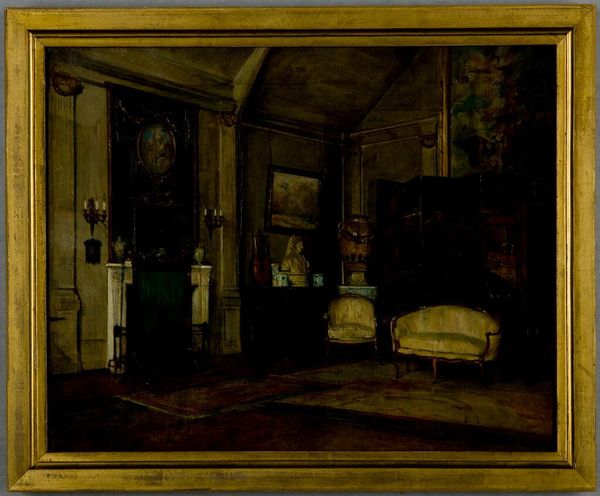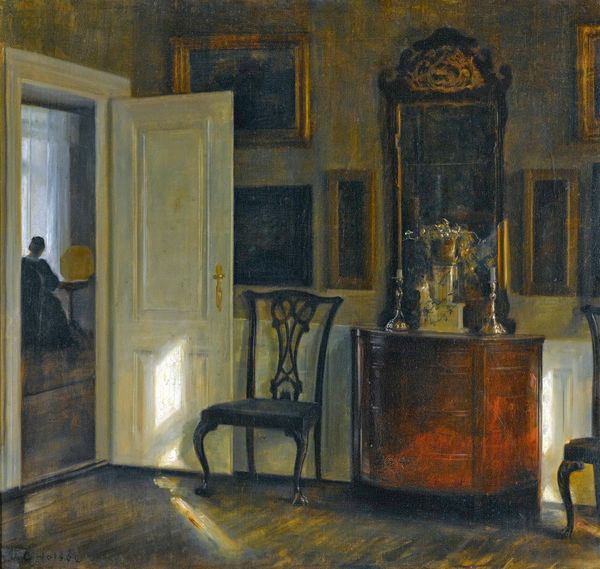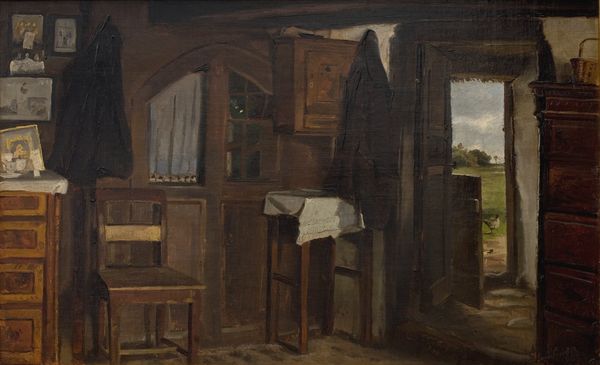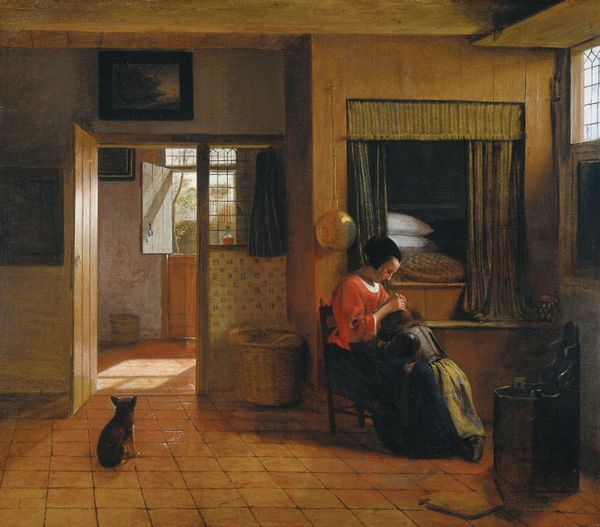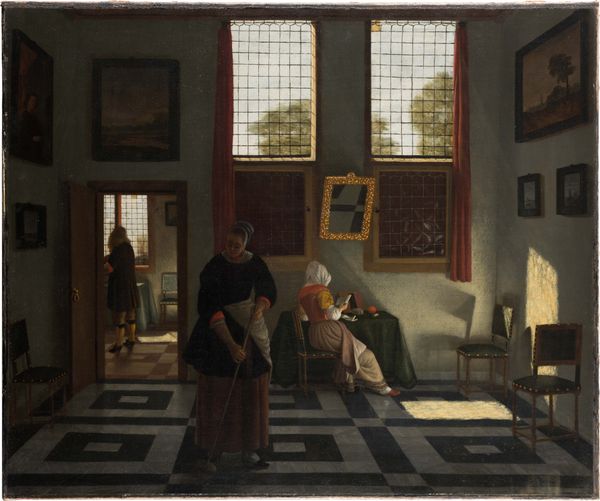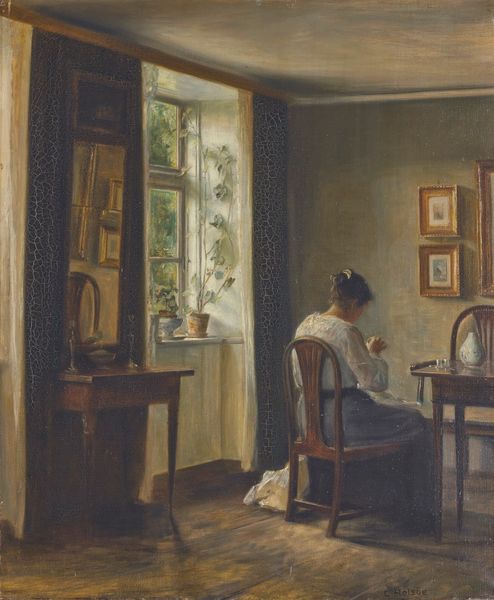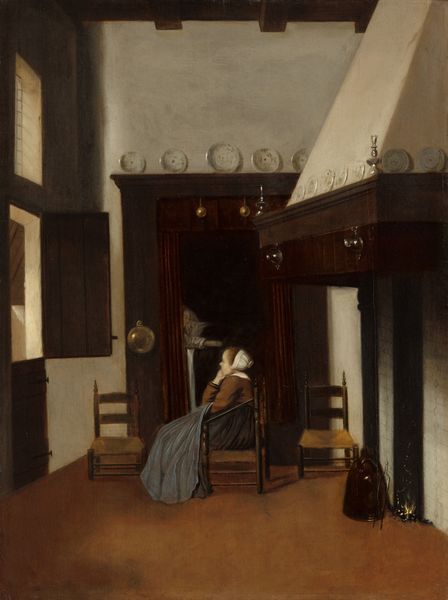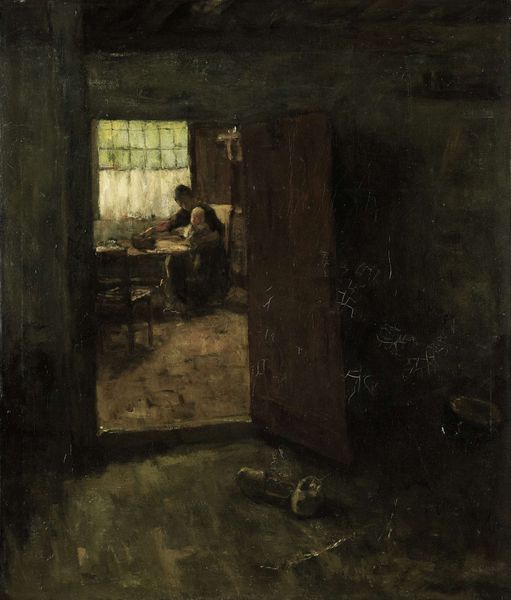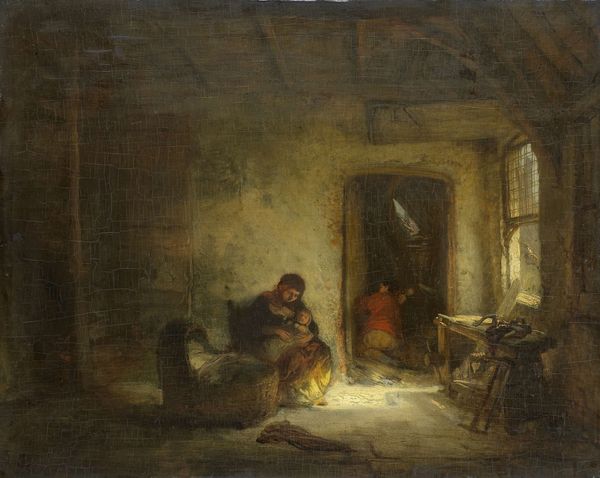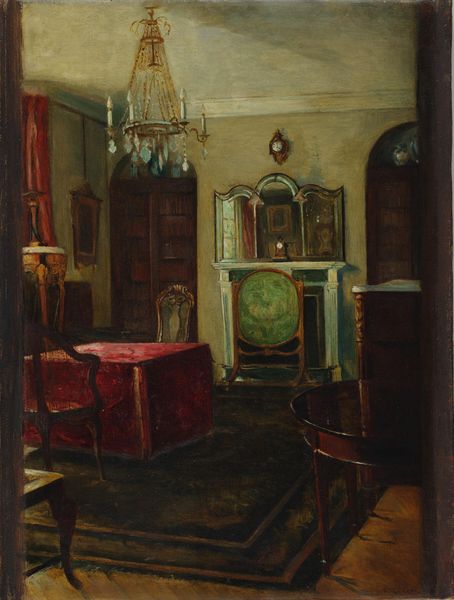
Copyright: Public domain
Curator: I find this space so intimate. Jose Ferraz de Almeida Junior painted "The Artist's Atelier" in 1886. The Museo de Arte de Sao Paulo holds this oil painting. Editor: It’s very atmospheric. Dimly lit, brown tonalities, and a kind of lived-in quality. The scale seems almost claustrophobic, as if it's revealing not just a physical space, but the inner life of the artist. Curator: Indeed. Look at how Almeida Junior depicts the studio as a place of both creation and domesticity. There's the bed, the clothing hanging...it’s a blurring of public and private, really exposing the artist's life, not merely his profession. And the materiality, you can see the texture in the oil paint, applied with thick brushstrokes giving this great sense of tactility. Editor: Absolutely, and situated within its social context, you get a sense of the artist's social standing. This wasn't just about making pretty pictures; it speaks to a specific time and place for Brazilian artists at the turn of the century— their economic realities. Curator: How so? The relatively spartan interior perhaps hints at the life of a working artist in that period. I wonder how he negotiated the marketplace. Editor: Precisely. And who did the artist serve, who was commissioning work and what did that mean for their social mobility and standing? The sculptures included are classical forms but this scene is quite grounded. I like how you pointed out the blending of private and public - very similar to so many workers today, where we bring our emotional baggage to bear on our making. Curator: The romantic, genre-painting aesthetic certainly underscores that blending. How the space becomes an extension of the artist’s internal state. It prompts you to ponder, you know? Who inhabits these rooms? What materials did they use? How has their working life determined their way of life, perhaps in ways both visible and invisible to the everyday observer. Editor: I agree. This exploration reminds us to analyze art beyond aesthetics, integrating social history and acknowledging the conditions shaping its creation. The paintings prompt dialogue around representation, labour, and class structures... Curator: Ultimately it gives an entryway to new kinds of labor-centered artistic inquiries! Editor: A wonderful prompt for social inquiry.
Comments
No comments
Be the first to comment and join the conversation on the ultimate creative platform.
